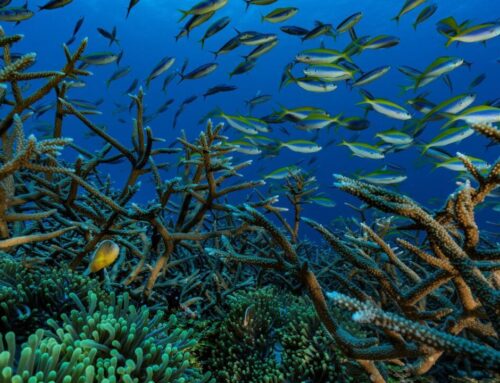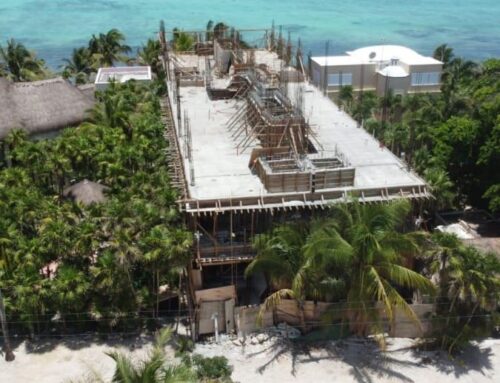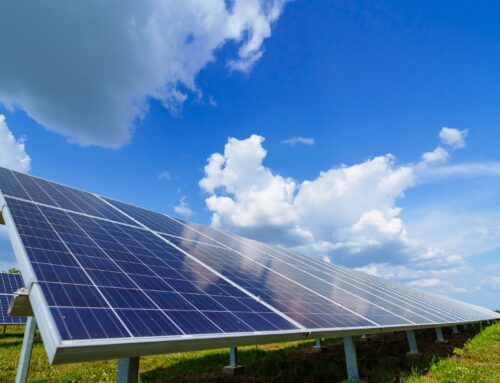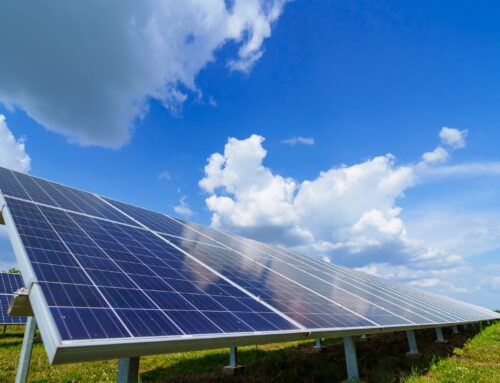Environmental consequences of the war in Ukraine. August-September 2025 – Ukraine War Envi
October 4, 2025
Alexej Ovchinnikov
Each month, the UWEC editorial team shares highlights of recent media coverage and analysis of the Ukraine war’s environmental consequences with our readers. As always, we welcome reader feedback, which you can leave by commenting on articles, writing to us (editor@uwecworkgroup.info) or contacting us via social networks.
In this review, we will examine the environmental and energy aspects of the European Union’s adoption of its 19th package of sanctions against Russia and how the 2025-2026 Action Plan addresses environmental protection and the interests of civil society. We will also review the European Parliament’s recommendations for Ukraine’s integration into the EU (including those related to the analysis of the environmental consequences of the war). We also review the new book “Kamianska Sich National Park: War Against Nature”.
European Union adopts 19th sanctions package against Russia
The European Commission issued a statement on September 19 announcing a new package of sanctions. Russia’s ongoing and intensifying attacks on Ukraine’s civilian infrastructure are one reason for the EU’s tightening of its sanctions policy. The EU’s Kyiv office was destroyed in a recent attack.
The new sanctions focus on fossil fuels, the sales of which Russia uses to finance its military invasion of Ukraine. The EU has agreed to move up a ban on imports of liquefied natural gas (LNG) to European countries from January 2028 to January 2027. Another 118 new vessels were added to Russia’s shadow fleet list, bringing the total number of sanctioned vessels to 560. The list of sanctions includes oil traders and oil refinery and petrochemical companies from third-party countries (including China). Transactions with Russian companies Rosneft and Gazpromneft face a complete ban, while the assets of other companies involved in the sale of Russian fossil fuels have been frozen. The package also bans the reinsurance of vessels included in the sanctions list.
The Commission wrote: “Russia’s war economy is sustained by revenues from fossil fuels. We want to cut these revenues. So we are banning imports of Russian LNG into European markets. It is time to turn off the tap. We are prepared for this. We have been saving energy, diversifying supplies and investing in low-carbon sources of energy like never before. Today, these efforts pay off. … In three years, Russia’s oil revenues in Europe have gone down by 90%. We are now turning that page for good.”
A coalition of civil society organizations led by the Ukrainian NGO Razom We Stand called for a complete ban on EU imports of Russian LNG. Signatories of the open letter included representatives of climate and environmental organizations such as Climate Action Network (Europe), Greenpeace Ukraine, 350.org and others.
As noted in an UNIAN News Agency interview with Razom We Stand executive director Svetlana Romanko, sanctions can only be effective if EU countries develop energy efficiency programs and transition to renewable energy sources. Countries committed to energy transition are more prepared to impose sanctions. Countries that continue to rely on fossil fuels, such as Hungary and Slovakia, acknowledge their energy dependence on Russia and block the expansion of sanctions. The fight against Russian aggression is thus also part of the fight to achieve climate neutrality goals.
In addition to the imposition of sanctions, civil society organizations (CSOs) are also calling for the development of carbon-neutral energy to facilitate energy independence. In her article “What should carbon-neutral energy be,” Svetlana Romanko discusses the basic principles of carbon-neutral energy. It should be noted that Ukraine must adopt and implement a decarbonization strategy as part of its European commitments.
First and foremost, carbon-neutral energy must be profitable, understandable and acceptable to everyone, from citizens to the government. Civil society organizations can act as intermediaries between government institutions and society. Romanko said, “Part of a decarbonization strategy, just transition is a complex socio-economic process that requires political will and deep trust on the part of communities.”
Read more: Just transition for coal-mining communities: What is it and how does it work in wartime Ukraine?
Romanko believes that cooperation between government and CSOs must play an important role in implementing a decarbonization strategy and developing carbon-neutral energy. This cooperation would be institutionalized through councils and by involving CSOs in the development and implementation of strategies. That work is also important for the sustainable and effective development of Ukraine’s “green recovery” programs. “Essentially, a change in the culture of interaction is necessary. The government must perceive public organizations not as opposition but as allies in achieving a common goal: an energy-independent, sustainable, climate-safe Ukraine,” notes the Razom We Stand director.
According to Romanko, any top-down reform could provoke resistance among citizens. Here again, the role of community organizations with extensive experience working with communities (hromady) and that are more adaptive and creative in promoting carbon-neutral energy concepts is important. Education and outreach programs and local support for renewable energy development projects will contribute not only to Ukraine’s integration into Europe, but also to the achievement of carbon neutrality goals and the country’s green recovery.
The maximum effectiveness of sanctions will not be achieved when Ukraine and Europe finally stop buying Russian carbon fuels, but rather when there is no longer any demand for these fuels. When oil, gas and coal prices fall so low that it is no longer profitable to trade them, Russia will no longer receive dividends, no matter the mechanisms devised to circumvent sanctions.
Ukraine presents a 2025-2026 Action Plan aimed at enhancing defense, European integration, and recovery
The Ukrainian government presented the action plan on August 18. It identifies 12 priorities: security and defense, European integration, anti-corruption, macrofinance and reforms, business, social policy and restoration of frontline territories, policy on veterans, healthcare, education and science, recovery, culture and winter energy stability.
Among the operational objectives of the priority Action Plan for 2025 is the issue of environmental policy. Specifically, this refers to Operational Objective No. 4: “Ukraine uses its own resources economically and efficiently, with care for the environment and future generations.” Short-term tasks for achieving this goal include the development of land reclamation systems, digitization of the fishing industry, development of a legislative framework for the demining process, rapid and effective support for farmers as part of the industry’s recovery, development of a system for monitoring soil and groundwater pollution, development of an institution for state environmental protection instruction, the creation of transparent conditions for recovery, the liberalization of the land sales market, the development of new legislation on the sale of forests and timber, and so forth. In many ways, environmental issues have become intertwined with issues of resource extraction and agriculture, which may be due to the elimination of the Ministry of Environment and Natural Resources and the integration of its functions into the newly created Ministry of Economy, Environment and Agriculture.
Environmental aspects of Ukraine’s progress toward EU membership
Environmental issues are also addressed in priority areas including European integration and the country’s recovery. On September 9, the European Parliament approved the European Commission’s report on Ukraine’s progress toward EU membership. However, as WWF-Ukraine notes, in its resolution it called for continued reforms in the field of environmental protection.
The European Parliament gave high praise to the reform of Ukraine’s energy sector and its alignment with European Green Deal requirements. The development of a legal system to combat crimes against nature was also highly praised. As for the agreement between the US and Ukraine on the extraction of rare earth metals, any developments must comply with the EU’s high standards.
Another section of the resolution was devoted to the environmental consequences of Russia’s military invasion of Ukraine. European parliamentarians called on the international community to “give full support to all initiatives documenting the environmental destruction caused by Russia’s war and to back efforts for accountability and compensation in foreign jurisdictions,” as well as to support a comprehensive environmental restoration strategy as part of Ukraine’s reconstruction.
However, there were also criticisms. For example, the European Parliament noted in its resolution that it is unacceptable to combine environmental impact assessment (EIA) and strategic environmental assessment (SEA). These mechanisms must be improved and used as a condition for the country’s sustainable recovery from the consequences of the Russian invasion.
The resolution draws attention to Law No. 12089 (Law of Ukraine No. 4292-IX of March 12, 2025), which allows private individuals to legalize land alienated from the state, including forests and water bodies. In its current wording, it does not comply with EU standards.
Members of the European Parliament called on the Ukrainian authorities to actively combat illegal logging, particularly in the Carpathians, as well as on the government to invest more actively in environmental safety and sustainable tourism infrastructure. The resolution also calls on the European Commission to support the development and protection of areas included in the Emerald Network.
Ukrainian environmental organizations are trying to ensure that European integration also complies with EU climate and environmental goals and standards. For example, Ecohome experts analyzed draft law No. 12087-d regarding the implementation of European law on energy market integration and improving supply chain security and competitiveness in the energy sector. According to environmentalists, the bill does not fully represent the interests of community associations and could be used by large players and energy companies for their own enrichment. Environmentalists sent their comments and observations to the Minister of Energy and the Verkhovna Rada Committee on Energy, Housing and Utilities.
Publication of “Kamianska Sich National Park: War Against Nature”
The environmental organization Environment People Law published this book. It examines the history of Kamianska Sich National Park, military operations on its territory, the consequences of the Russian military invasion for the park, including fires, construction of fortifications, pollution (esp. munitions and combat shells), and the destruction of equipment and infrastructure. The impact on the park of the destruction of the Kakhovka hydroelectric dam and the draining of its reservoir is also examined. A section of the book is devoted to the legal grounds for holding the aggressor accountable for these environmental consequences.
Kamianska Sich National Park was established on April 19, 2019 and covers an area of 12,261 hectares in the Beryslavska district of Kherson region. The park was created on the site of two large ravines (former river beds) – the Kamianska and Mylivska. It also includes lands along the Dnipro River.
One reason for the park’s creation was the desire of conservation scientists to establish a nature conservation area on the right bank of the Dnipro River, as most nature reserves and national parks are located on the left bank (Askania-Nova, Black Sea Biosphere Reserve, Oleshky Sands National Park and others). The selected area possessed a high diversity of biotopes—aquatic, steppe, meadow, shrub, forest, rocky, and synanthropic (containing organisms that evolved to live near humans and benefit from human) landscapes. Its creation accomplished several nature conservation tasks at once and established conditions for ecosystem-level conservation. 80 species of lichens and 307 animal species, 97 of which are inscribed in the Red Book of Ukraine have been identified in the park. The national park also contains objects of historical value dating back to two periods (1709-1711 and 1730-1734) when it was the site of the Cossack’s “Kamianska Sich”, an administrative and military center where Cossacks gathered and lived.
On March 9, 2022, Russia occupied Kamianska Sich National Park. Despite this, work in the park continued. Employees even carried out guerrilla activities and passed on information about the occupiers to the Ukrainian Armed Forces of Ukraine (UAF). The park was liberated on November 9, 2022, during a UAF counteroffensive headed for Kherson. Despite this, the military consequences for the park did not end with that de-occupation. In December 2022, massive shelling began, attacks which intensified in 2023. In September-October 2023, villages located near the national park were subjected to active drone attacks. Local residents were forced to flee the area.
The de-occupation allowed scientists to visit the area to study the war’s impacts on nature conservation areas. The first expedition occurred in December 2022. One of the most negative consequences was found to be the fortifications built by the occupiers. For example, layers of turf were removed for camouflage, leading to the destruction of rare plants such as fescue (Festuca spp.) and feather grass (Stipa spp.). Virtually every forest strip was used for military purposes. During their retreat, Russian troops left behind vast quantities of both domestic and military waste: ammunition boxes, single-use plastic, food containers, dishes, bottles, etc. Trees were cut down for use in fortifications and camouflage purposes. Researchers documented soil contamination in craters left by shelling. Damaged equipment was also abandoned during the retreat. Steppe grasslands suffered from equipment movement, especially from heavy equipment such as tanks, munitions launchers, and trucks. The park’s infrastructure was damaged, and landmines were also a significant environmental consequence. As of April 12, 2024, 8,557 anti-personnel mines had been found in the park. An additional 145 metric tons of artillery shells were collected.
Located directly on the shore of the former Kakhovka Reservoir, the park was also affected by the dam breach at the Kakhovka hydropower plant on June 6, 2023. The park now serves as a base for expeditions exploring the exposed bed of the Kakhovka Reservoir. Research was also conducted in the Mylivska and Kamianska ravines, which once drained into the reservoir. First impressions were tragic—the bottom of the reservoir was covered with millions of dead mollusks. However, nature began to recover quickly, leading to the emergence of the new Velyki Luh (Great Meadow). During an October 2023 expedition, scientists discovered new biotopes forming on the exposed bed of the former Kakhovka Reservoir. Today, there is an urgent need to preserve Velyki Luh landscapes that formed after the disaster and to grant them nature conservation status.
Read more: Is it time to restore Velykyi Luh?
The example of Kamianska Sich National Park shows how nature conservation areas suffer during war. Created just a few years before the full-scale invasion, the national park was occupied, shelled, and used as a battlefield. Despite those challenges, scientists have managed to preserve it. The new landscapes revealed after the emptying of the Kakhovka Reservoir demonstrated nature’s amazing ability to recover.
Download and read “Kamianska Sich National Nature Park: War Against Nature” (in Ukrainian).
Translated by Jennifer Castner
Main image: Kamianska Sich National Nature Park Source: npp-sich.org.ua
Search
RECENT PRESS RELEASES
Related Post




